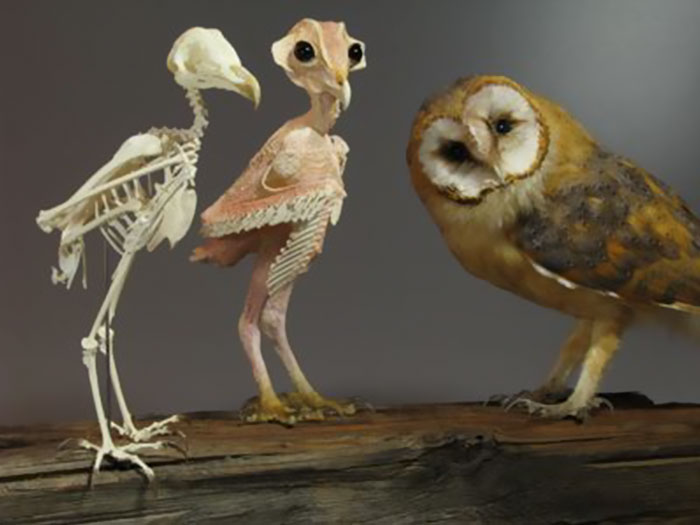Many times, we observe owls covered in feathers and fur all over their bodies. However, when owls don’t have feathers, they can appear eerie and ghost-like. If you’re curious about what owls without feathers on their legs look like, we have all the details for you to explore. Take a look at the information below.
Owl without Feathers on Legs
The covering of an animal’s body with feathers makes it look pretty and sometimes appealing. For many animals and birds, like owls, having feathers is important because without them, some of them can look really unpleasant. Owls without feathers on their legs can seem strange to many people. Some of us might find them frightening, while others might think they’re adorable.
Eyes
The face of barn or naked owls is pointed forward, and their eyes are black. Since these owls lack feathers, their eyes might seem a bit larger compared to owls with feathers. The black, large eyes alone can be quite intimidating. Learn about Fox Eye Color.
Color
Featherless owls have black eyes. The combination of yellowish-beige and grey colors is seen on their head and wings, while their underwings, face, and body are white. These colors help them stand out in the dark, making them visible during the night.
Legs
Owl legs are usually covered in feathers, so many people aren’t familiar with them. Owls naturally have long legs, and without feathers, they can appear even longer, giving them a somewhat eerie appearance.

Factors about Owls Losing Feathers
Various factors can impact owls and cause them to lose their feathers. Here are some of these factors:
- Genetic Mutation: Genetic mutations can alter the normal growth of feathers during an owl’s development.
- Disease: Diseases like “Feather Picking Syndrome,” where owls engage in excessive preening, can lead to feather loss.
- Disorders and Infections: Certain disorders and infections can damage the follicles responsible for feather growth, affecting the owl’s plumage.
- Imbalance in Hormones: If an owl’s hormones are imbalanced, it can hinder the normal growth and development of feathers, resulting in a featherless appearance.
- Deficiency of Multi-Vitamins: A lack of essential minerals, vitamins, and nutrition can adversely affect the growth of feathers in owls.
- Environmental Factors: Environmental conditions such as weather and habitat can disrupt the natural feather cycle, impacting the owl’s ability to maintain its plumage.
Featherless owls aren’t necessarily unhealthy; it could be a natural variation or something simila
How to See Featherless Owl?
To spot featherless owls, follow these tips:
- Choose clear weather, as they don’t like bad weather, rain, or windstorms. They prefer cavities in such conditions.
- Look in farmlands, hedgerows, urban areas, and similar places where featherless owls hunt.
- Search during daylight in winter, as these owls often go hunting during the day in winter.
- Spot them at dusk and dawn, as they prefer these times, and you may also find them on the verges of roadsides.
In conclusion, we often see owls and find them interesting but Owl without Feathers on Legs: How to Look Like. We don’t know about them but still curious. So don’t worry we define their look, factors that affect their feather growth. If you still don’t believe then go and spot them by the defined points.
